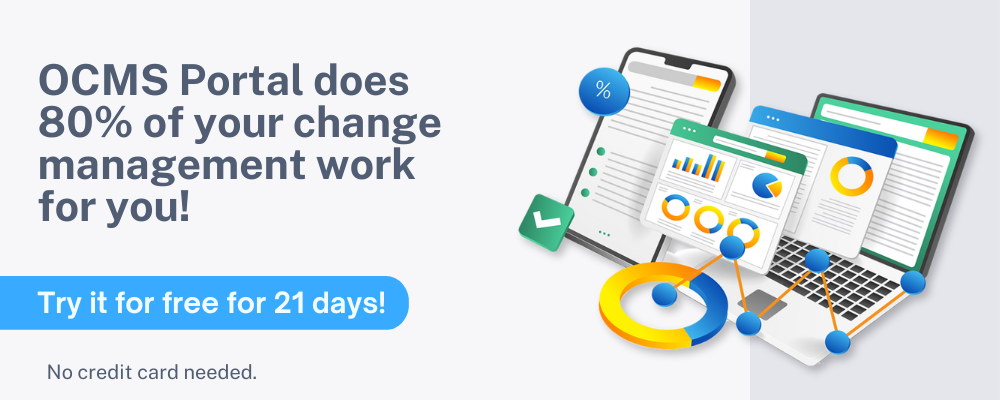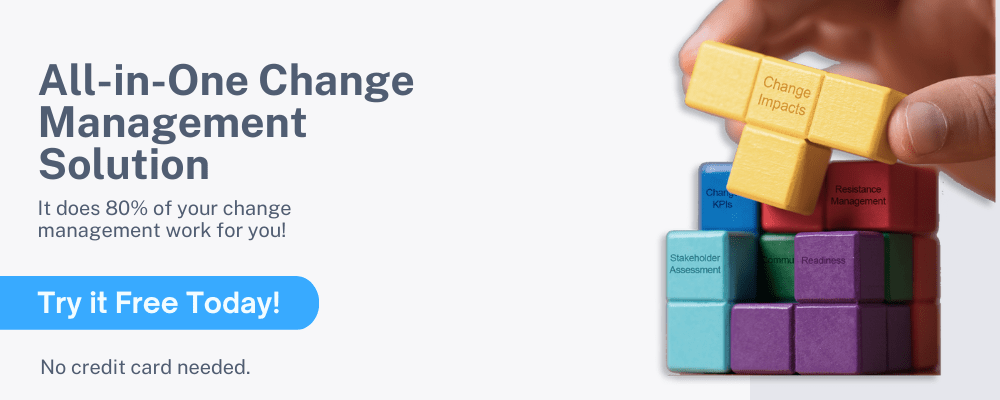The Best Strategies for Managing Change in Healthcare | Change Management Guide
 Embracing Change with a Heart: A Guide to Applying Best Change Management in Healthcare
Embracing Change with a Heart: A Guide to Applying Best Change Management in Healthcare
Welcome, fellow healthcare enthusiasts, to a thrilling exploration into the world of change management, where innovation meets stethoscopes, and transformation dances with the heartbeat of healthcare! Picture this guide as your backstage pass to the captivating show of applying the absolute best in change management practices within the dynamic realm of healthcare.
In this creative odyssey, we’re not just talking about managing change; we’re painting a canvas of evolution, where each brushstroke represents progress, adaptability, and a commitment to creating a healthcare masterpiece.
Whether you’re a healthcare maven or a curious soul eager to sprinkle some magic into the industry, you’re in for a treat.
Think of this guide as your friendly navigator through the twists and turns of change in healthcare, making the seemingly complex as approachable as your favorite bedtime story. So, fasten your imaginary seatbelt and get ready for a journey where change isn’t just a concept; it’s the hero in a captivating tale of healthcare transformation. Let the adventure begin!
Keen to peek into the future? Your brief preview on applying the best change management in healthcare awaits.
Quick Summary
The Vital Role of Change Management in Healthcare
Change management is crucial in healthcare to provide a strategic and methodical approach to guide people and organizations through significant changes. Utilizing change management models ensures that key factors, such as communication planning, assembling a team of change champions, and assessing readiness for change, are not overlooked. This systematic roadmap is essential for successfully implementing changes that can enhance patient care efficiency or reduce costs in healthcare.
Change in healthcare involves a process of transitioning from current behaviors to new ones, establishing the new behaviors as the norm. Without the structured guidance of change management, it becomes challenging to navigate this transition effectively. The importance of successful change management in healthcare is underscored by the potential high costs and adverse impacts on patient care if changes fail to deliver desired results or create confusion between old and new ways of doing things.
Leading Change in Healthcare: Best Strategies and Management Models
Implementing change in healthcare involves various strategies based on specific change management models. Different organizations may prefer one model over another, and some may seek guidance through resources like change management PPT presentations. Despite potential confusion in choosing a methodology, several common principles underlie these models:
- Impact Assessment: It is crucial to assess the impacts of change before implementation to understand potential consequences.
- Resistance to Change: Recognizing that resistance is a natural human response is essential. Identifying and addressing resistance are integral parts of successful change management.
- Communication of Purpose: Clearly expressing why change is necessary and articulating its value helps in gaining acceptance and support.
- Leadership and Champions: Securing support from leaders and change champions is crucial for effective change management.
- Behavioral Change: The process involves shifting from old habits to new ones and reinforcing the adoption of the “new way” as the new norm.
- Readiness Assessments: Conducting assessments of organizational readiness, along with comprehensive planning and communication, is vital for successful implementation.
- People-Centric Change: Recognizing that organizations can only change if the individuals within them embrace change underscores the importance of focusing on the human element in change initiatives.
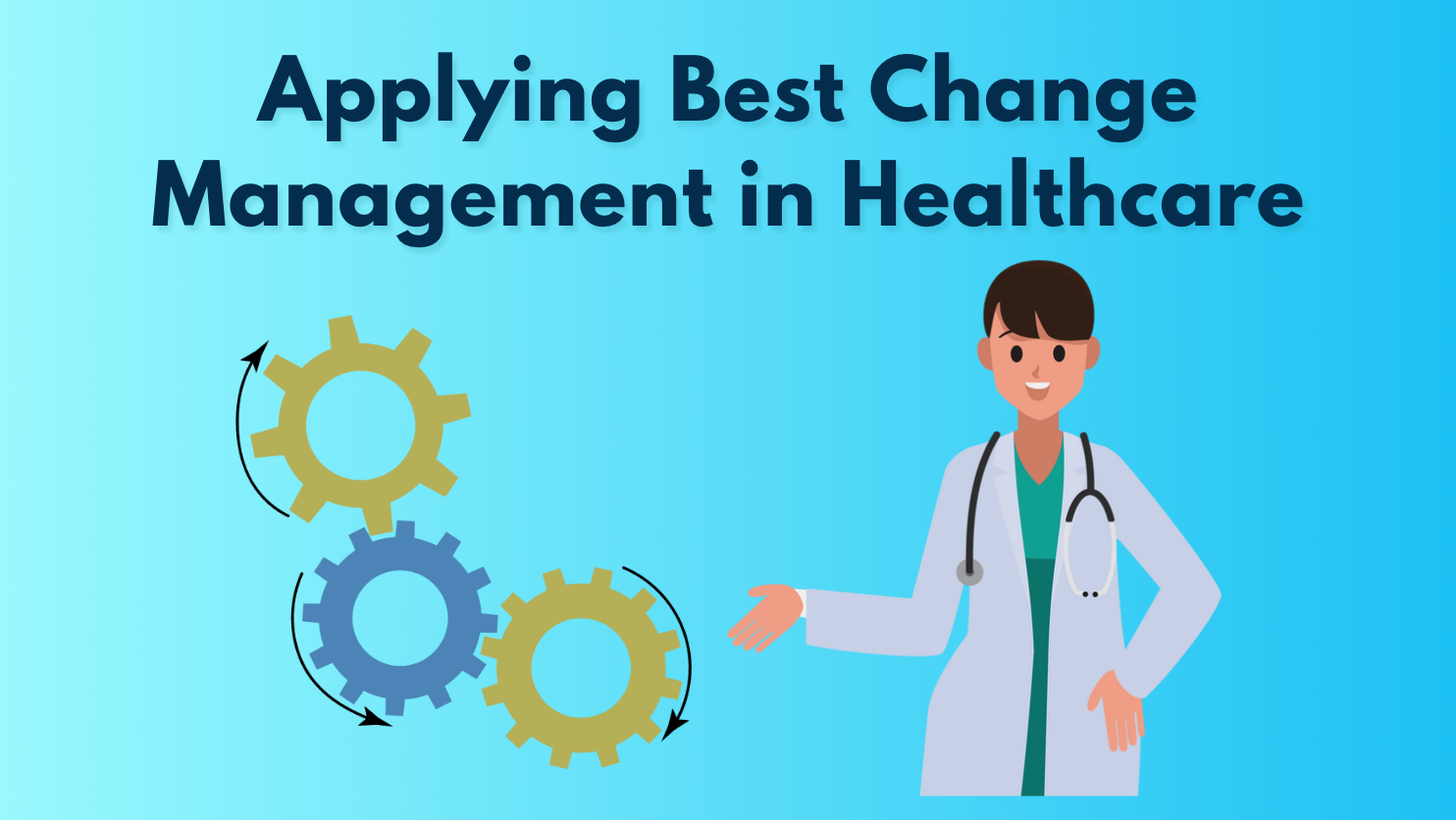
Revolutionizing Healthcare: Exploring Change Management Models
Several change management models are utilized in healthcare, each offering distinct advantages:
- Prosci ADKAR Model:
- Stages: Awareness, Desire, Knowledge, Ability, Reinforcement.
- Phases: Preparing for change, Managing change, Reinforcing change.
- Benefits: Easy-to-understand steps, simple language, focuses on driving individual change from the bottom up.
- Kurt Lewin Change Model:
- Stages: Unfreeze, Change, Freeze.
- Includes: Force Field Analysis to identify restraining and driving forces.
- Benefits: Comprehensive and easy to follow, based on human psychology, employs a bottom-up approach.
- John Kotter 8-Step Change Model:
- Steps: Create urgency, Build coalition, Form vision, Enlist army, Enable action, Generate wins, Sustain acceleration, Institute change.
- Advantages: Maintains momentum throughout the project, comprehensive and easy to follow, emphasizes the importance of willingness to change.
- Bridge’s Transition Change Model:
- Stages: Ending, losing, and letting go; The neutral zone; The new beginning.
- Focus: Addresses the emotional aspects of change.
- Benefits: Emphasizes emotions involved, comprehensive and easy to follow, adopts a bottom-up, people-oriented approach.
- McKinsey 7S Framework:
- Elements: Structure, Strategy, Systems, Shared Values, Staff, Style, Skills.
- Purpose: Identifies and harmonizes key organizational areas during change.
- Benefits: Encompasses seven crucial organizational aspects, maintains balance after healthcare changes, works well in conjunction with other models.
Choosing the appropriate model depends on organizational preferences, and each model addresses the fundamental principles of change management, including assessing impacts, acknowledging resistance, communicating the purpose, securing leadership support, managing behavioral change, conducting readiness assessments, and recognizing the pivotal role of individuals in organizational change.
Crafting Change Strategies: A Blueprint for Healthcare Organizations
Managing change in a healthcare organization involves careful planning and strategic considerations. The initial steps focus on information gathering, which includes various assessments such as readiness assessment, impact assessment, project assessment, and stakeholder analysis.
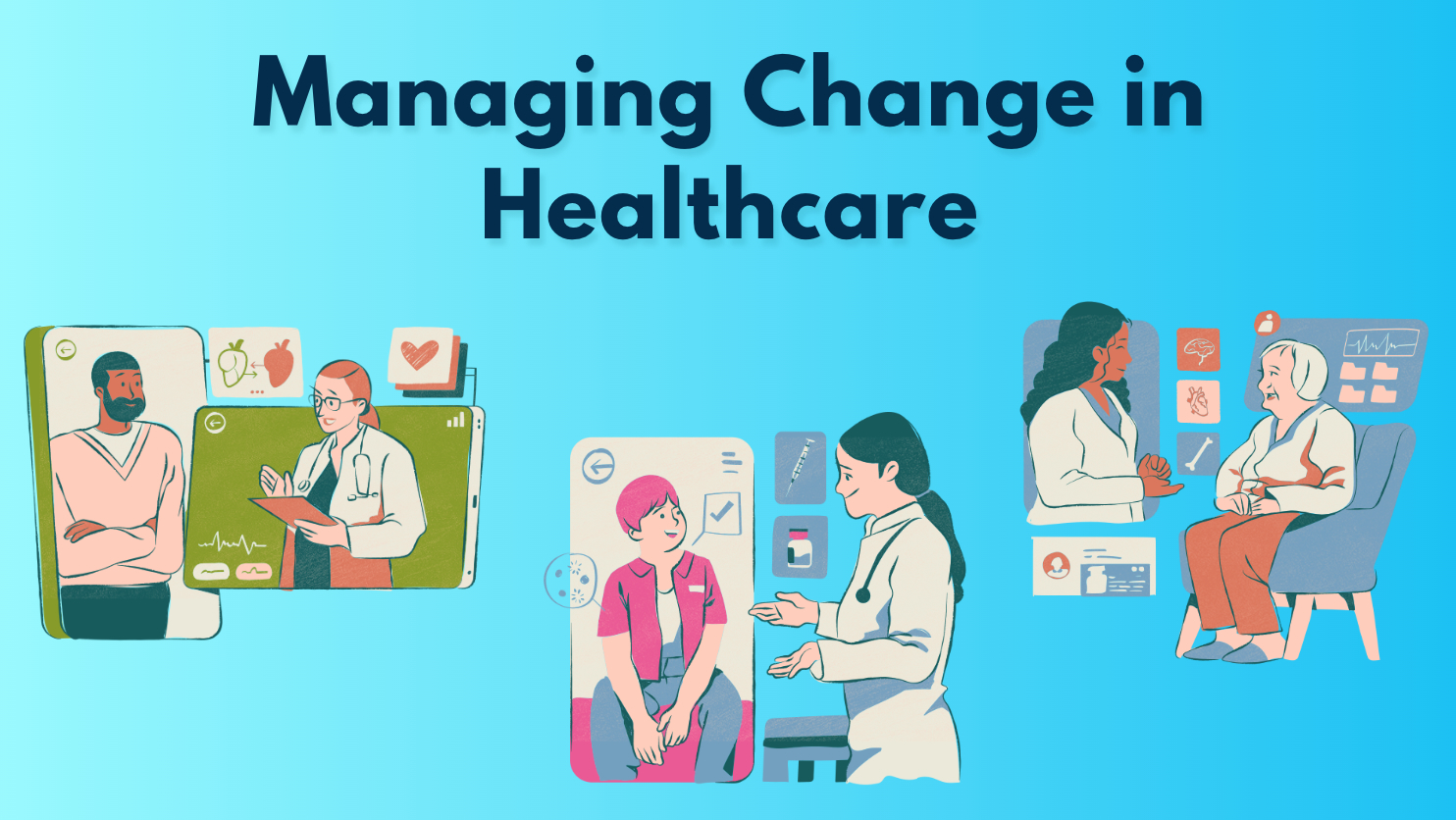
Strategies for handling change management in healthcare projects include:
- Information Gathering:
- Readiness Assessment: Evaluate the organization’s readiness for cultural change in healthcare.
- Impact Assessment: Assess the impact of change on stakeholders to determine training needs.
- Project Assessment: Examine the problem, benefits, and milestones of the change project.
- Stakeholder Analysis: Identify and analyze everyone impacted by the change.
- Planning & Strategizing:
- Communication Planning: Develop a communication plan to convey the key messages throughout the project.
- Leadership Coaching Plan: Create a plan to coach leadership on emphasizing the importance of change.
- Change Champions Network: Organize a network of change champions to support and drive change at the grassroots level.
- Training Plan: Based on the impact assessment, create a comprehensive training plan for affected users.
- Resistance Management Plan: Develop a plan to manage resistance to change effectively, a critical aspect of successful change management in healthcare organizations.
By integrating these strategies, organizations can establish a roadmap for change implementation in healthcare. This approach addresses both the planning and people-centric aspects, ensuring a well-rounded and comprehensive approach to managing change in the healthcare sector.
People-Centric Change: Guiding Transformation in Healthcare
Effective change management in healthcare requires attention to human behavior and emotions. Models like Lewin and Bridges, focusing on user emotions and behavior, go beyond the importance of change management and delve into addressing concerns, fears, and creating excitement about the change.
Tips for Managing Change in Healthcare from the “People” Side:
- Understand Group Dynamics: Recognize the dynamics of different groups within the healthcare facility.
- Proactively Address Resistance: Utilize resistance management tools to address resistance before it impedes progress.
- Highlight WIIFM (What’s in it for Me?): Clearly communicate the benefits of the change to stakeholders.
- Listen to Concerns: Actively listen to questions, fears, and resistance to adjust and address concerns.
- Communicate Frequently & Be Transparent: Maintain transparent communication to foster understanding and acceptance.
- Thorough Training: Allocate sufficient time for comprehensive training to ensure familiarity with new processes.
- Reward Milestones & Celebrate Success: Acknowledge small wins and celebrate milestones to maintain motivation.
- Sustain Change by Staying Involved: Continue to be a resource after the change, offering support and assistance to users.
Managing change in healthcare involves a holistic approach that considers the intricacies of individual and group responses, emphasizing ongoing support and communication for sustained success.
Detailed Deep Dive
Change management in healthcare, just as in any other industry, can be a long process that’s not guaranteed to be completed successfully. People are naturally resistant to change, which can often derail efforts to leading change in healthcare.
To ensure a healthcare change project is completed successfully and learn how to sustain change in healthcare workplaces, a change management model and methodology is often used.
Change models in healthcare provide a roadmap for change and a framework to get past barriers to change. Change models also help with strategies for implementing change in healthcare using proven tactics based on human behavior.
Why is change important in health care and how do you implement it?
We’re going to answer those questions and more in this article on leading and sustaining change in healthcare.
What You’ll Learn
This article will cover answers to some of the most prevalent questions about the importance of change management in healthcare, including:
- What is change in healthcare?
- What is a change model in healthcare?
- Is there change management in healthcare PPT to review?
- What are the most popular change management theories in healthcare?
- What are some of the driving forces of change in healthcare?
- What does implementing culture change in healthcare mean?
Anyone that’s dealing with facilitating change in health and social care will find valuable information here that can be used for managing change in healthcare successfully.
The Healthcare Sector Continues to Evolve
The healthcare industry is always evolving. Changes in healthcare come from advances in technology, new regulatory compliance requirements, and the need to continually improve efficiency and quality of care.
World events can also cause changes in health care processes. For example, the coronavirus pandemic has drastically changed the environment for healthcare providers.
The sudden increase in telehealth use and reduction in elective procedures are both drivers for change in healthcare for organizations that want to stay competitive.

Organizational Change in Healthcare
What are some of the recent changes in healthcare?
Here are a few examples of drivers for implementing change in healthcare organizations:
- Advances in artificial intelligence (AI)
- Blockchain electronic health records
- Telemedicine used both at home and in hospitals
- Changes to wide-reaching regulations, like the Affordable Care Act (ACA)
- Increased mobile device use
- Modernization of payment options
See Also: The Best Practices for Changing Organizational Culture in Healthcare
Do you have questions about the different change management models in healthcare? or looking for examples of change in healthcare? We’d love to hear from you, click here to contact us.
What is Healthcare Change Management?
Change management is used in multiple industries, in addition to healthcare, to offer a framework for guiding people and organizations through a change. Change models are used to instruct change managers in creating, implementing, and sustaining successful plans for a change project.
Healthcare change management is simply the application of change management in a healthcare setting. Examples of organizational change in healthcare would be if new software was being adopted for digital patient health records or if a new appointment setting protocol was being implemented.
Any type of change to “the way we do things” in any way is considered a change and requires managing change in healthcare to transition an organization successfully.
What is Change Management in Health Care?
When looking at how to implement change in healthcare, it’s important to look for change models that focus on people.
Because healthcare is care and patient-based and involves multiple team members, such as nurses, doctors, lab technicians, and others, the most successful change models in healthcare will focus on the human element of guiding people through the change.
If the change model you’re using isn’t centered on how people react to change and strategies on getting them past resistance to change, then there’s a good chance your change initiative won’t be successful or won’t be sustained.
Change management strategies in healthcare have to consider all the stakeholders involved, which can be everyone from billing to frontline medical staff to patients receiving services.
Why is Change Management Important in Healthcare?
Change management models in healthcare help ensure those managing a change project don’t miss important factors when it comes to guiding people and organizations through a change.
For example, steps to implement change management in healthcare will include things like planning communications, putting together a team of change champions, and evaluating readiness for change.
Without the type of strategic and methodical roadmap that’s provided by using change management in healthcare, it can be very difficult to make an important change successfully that might make patient care more efficient or reduce costs.
Change is often described as a process of undoing current behaviors, teaching new ones, and then ensuring the new behaviors become the new norm. Steps to implement change in healthcare take that transition into consideration and give change managers tools to help make it happen.
Why is change management important in healthcare?
Ensuring change is successful in healthcare is important because if changes in health care fail to provide desired results or leave some people confused between the “old way” and “new way” of doing things, the costs can be very high and could impact patient care.
Don’t Miss: Resolving Barriers to Change in Healthcare & Physicians
Got questions like “what is change management in healthcare?” or “why is change in healthcare important?” Drop us a message and let us know.
Healthcare is Changing Rapidly Because?
Before we get into some models of change management in healthcare that organizations use, let’s discuss why change is happening so rapidly in healthcare.
The healthcare field has multiple moving parts and is also continually evolving. Just about every single person on the planet has a healthcare interaction at least once, and likely several times, during their life.
When evaluating change in healthcare, we find several factors that are drivers for change in healthcare.
Medical Discoveries
From the invention of the Polio vaccine to advances in autism treatments, medical discoveries continue to push the boundaries of healthcare forward. This often requires changes in healthcare to adopt new treatments, drugs, and therapies.
Technology Advances
New software applications for billing or scheduling, telemedicine robots, and advanced IoT equipment that can send patient readouts to a doctor’s phone are all examples of tech advances that require change management healthcare strategies to implement.
Regulatory Changes
Those in the healthcare industry have to comply with regulations like the Health Insurance Portability and Accountability Act (HIPAA), Medicare/Medicaid, and ACA. Any changes in those regulations require changes in health care procedures, which means personnel needs to learn new ways of doing things.
Cost Cutting/Efficiency Improvements
Another reason for leading change in health and social care is due to efficiency improvements and cost-cutting in an organization.
An organization may automate certain processes to make them more efficient. They may also make changes in the way personnel are scheduled to reduce their labor costs. These are both examples of organizational change in healthcare.
Changes in Patient Behaviors
Dramatic changes in patient behavior, such as not wanting to risk coming in during a pandemic, are responsible for recent changes in healthcare. If patient behavior changes, then healthcare facilities have to evaluate how to respond.
This can lead to implementing change in healthcare organizations to reach patients electronically as well as make them more secure that they’ll be protected when receiving care.
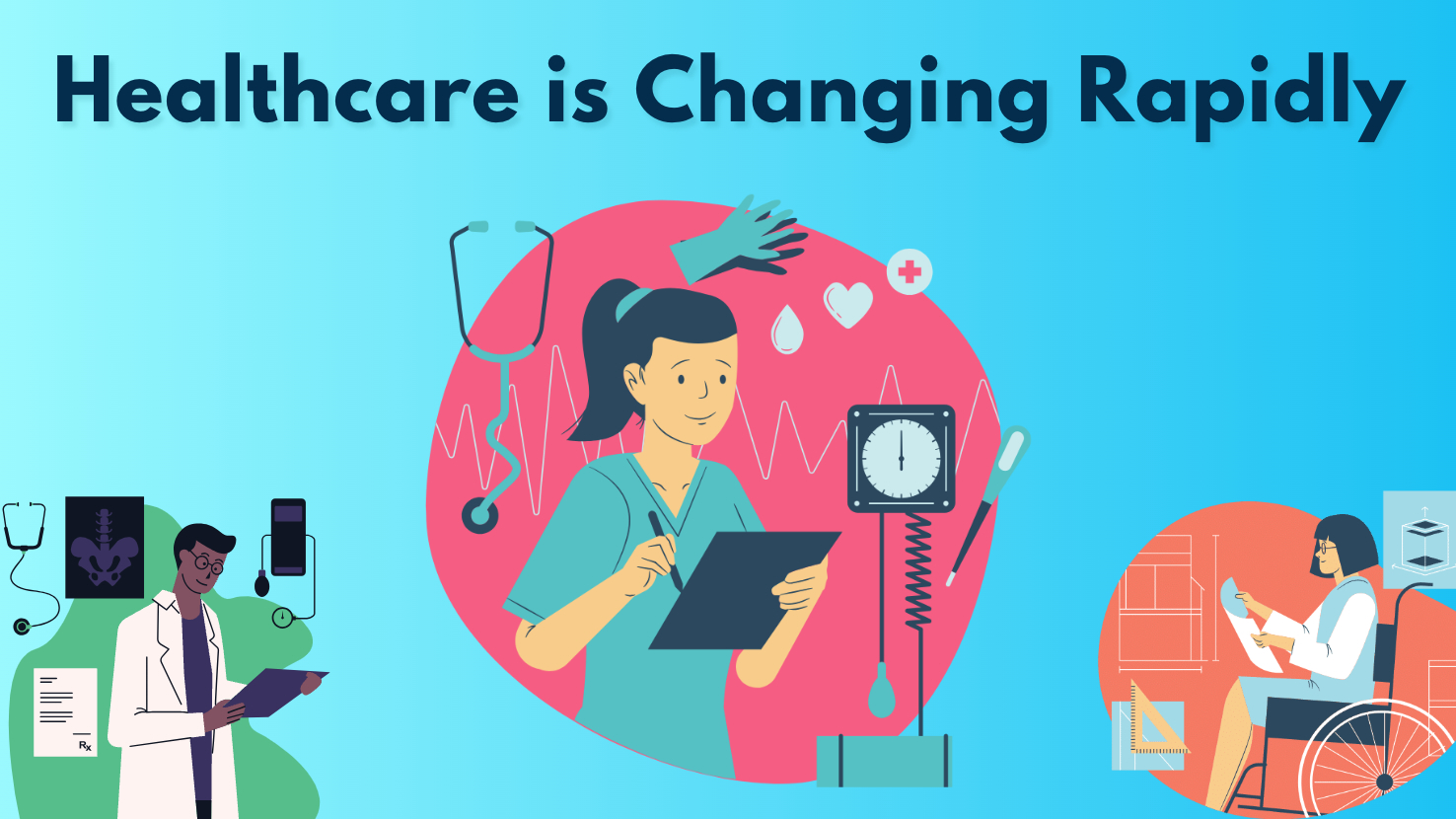
Examples of Organizational Change in Healthcare
Strategies for Implementing Change in Healthcare | Best Change Management Models
There are several strategies for implementing change in healthcare based upon a particular change management model. Some organizations may be more familiar with a certain change model in healthcare over another and use it for any kind of change.
Others may search online for change management in healthcare PPT or any change management PPT to help them understand which is the best model to use.
Honestly, it can get confusing when you try to choose which change management methodology to use for facilitating change in health and social care. But it helps to remember some of the basics that they all address in different ways.
These basics of change management theories in healthcare are:
- Impacts of change need to be assessed (i.e., impact assessment)
- People will be resistant to change; it’s human nature
- You need to identify and address resistance to change
- It’s important to express WHY there is a need for change and the value
- Getting leaders and change champions to support you is important
- You’re basically changing old habits, and then reinforcing the “new way” as new habits
- Organization readiness assessments, planning, and communication are all vital
- Organizations can’t change unless the people inside them change
Related: Best Guide for Improving Healthcare Leadership in Healthcare & Social Care
Are you looking for examples of change management in healthcare or examples of organizational change in hospitals or just have questions on models of change in healthcare? Send us a message with your questions or comments.
Change Models in Healthcare
Here is a brief overview of the more popular change management models in healthcare as well as other industries.
The Prosci ADKAR Model
The Prosci ADKAR model that can be used for change management strategies in healthcare is one of the most popular because it’s based on the stages people need to traverse to make it through a change successfully.
When explaining how to implement change in healthcare using the ADKAR model, there are two main pieces:
- The 5 ADKAR stages
- A 3-phase process
The ADKAR stages people go through used for change management strategies in healthcare are:
- Awareness of the change
- Desire to support the change
- Knowledge of how to change
- Ability to adopt the skills/behaviors needed
- Reinforcement of the change
The 3-phase process is quite detailed, and it provides the steps to implement change in healthcare or another industry. The overview of the main phases of ADKAR are:
- Preparing for change
- Managing change
- Reinforcing change
The benefits of this change model in healthcare are:
- It offers easy-to-understand steps
- It uses simple language
- It’s focused on driving individual change from the bottom up
The Kurt Lewin Change Model
Another well-known model for leading change in healthcare is the Kurt Lewin Change Model. This model’s simplicity is one of the reasons it’s used for implementing culture change in healthcare and as a guide to sustaining it.
This is a 3-stage model that helps to answer how to sustain change in healthcare because that’s one of the stages. The Lewin model’s stages are:
- Unfreeze (addressing why current behaviors need to change)
- Change (going through the training process for change)
- Freeze (sustaining those new behaviors as the new “habit”)
Using this model for leading change in health and social care also involves Lewin’s Force Field Analysis. This is a method of identifying things that are restraining forces for change and those that are driving forces of change in healthcare.
The benefits of using this model of change management in healthcare organizations are:
- It’s one of the most comprehensive and easy to follow
- It’s based on studies of human psychology
- It’s a bottom-up approach, focused on people’s behaviors
The John Kotter 8-Step Change Model
Another model that helps with managing change in healthcare is John Kotter’s 8-Step Model. Where the other two change models in healthcare mentioned above are bottom-up approaches, this one takes a more top-down approach.
It focuses on the need for urgency and momentum for driving and sustaining change in healthcare. It also emphasizes the need for a team of leaders and an “army” of supporters to help explain to employees, “Why is change management important in healthcare?” as it pertains to your project.
The 8-steps of Kotter’s model are:
- Create a sense of urgency
- Build a guiding coalition
- Form a strategic vision and initiatives
- Enlist a volunteer army
- Enable action by removing barriers
- Generate short-term wins
- Sustain acceleration
- Institute change
The advantages of using Kotter’s model for implementing culture change in healthcare are:
- It’s designed to ensure the “foot stays on the gas pedal” throughout a change project
- The steps are comprehensive and easy to follow
- It incorporates the concept that people should “want to” change, not feel like they “have to” change
Bridge’s Transition Change Model
Bridge’s Transition Model for change is very reminiscent of the Lewin model. Both have three stages that describe the general process of change. Bridge’s model is a bit more descriptive as far as what people are feeling or going through during a change process.
When you’re evaluating change in healthcare, understanding what stakeholders (doctors, nurses, lab technicians, other staff, patients, etc.) are going through is key. Those emotions need to be addressed successfully to transition people through the change.
Bridges three stages are:
- Ending, losing, and letting go
- The neutral zone
- The new beginning
This is one of the change management models in healthcare that is totally focused on the people that are going through the change. In each stage, it emphasizes the different feelings that people may experience and how to address them.
The benefits of using the Bridge’s transition model for changes in healthcare are:
- It addresses the emotions involved with change
- It’s comprehensive and easy to follow
- It’s a bottom-up, people-oriented approach
McKinsey 7S Framework
Another tool used to facilitate change management in healthcare is the McKinsey 7S Framework. This differs from the other strategies for implementing change in health care in that it doesn’t give you a step-by-step, but rather helps you focus on seven key areas of your organization.
The point is that all these areas are equally important and should be harmonized with each other. When you’re going through change management healthcare projects, the McKinsey 7S model helps you identify and understand the impacts and keep your organization in alignment.
The 7S’s in McKinsey’s model are:
- Structure (your organizational hierarchy)
- Strategy (how to plan to drive change forward)
- Systems (physical tools and workflows)
- Shared Values (culture, belief system)
- Staff (those being impacted by change)
- Style (personal managerial or working styles)
- Skills (current and future skills needed
The McKinsey framework can be used alongside another model for implementing change in healthcare organizations, so you have more detailed steps along with an overall goal to keep everything balanced.
The benefits of using this framework for facilitating change in health and social care are:
- It encompasses 7 key organizational areas
- It’s designed to maintain balance after the changes in health care processes
- It’s one of the change management theories in healthcare that works nicely alongside another
Popular Article: Best Change Management Certifications | Everything You Need
Are you looking for more information on change management in healthcare examples? or change management theory in healthcare? or have your own examples of change management in healthcare? Send a message to our change management team.
How Do You Manage Change in a Healthcare Organization? (Planning)
In these next two sections, we’ll discuss managing change in health care, meaning the planning, assessment, and similar activities, and how to facilitate change in healthcare, which deals with the people side of things.
When it comes to the first steps of how to implement change in healthcare, it all starts with information gathering, planning, and strategizing. Doing this part right will give you a roadmap with steps to implement change in healthcare at your organization.
What Are Some Strategies When Handling Change Management on a Health Care project?
The following are some of the tools you’ll use for leading change in health and social care projects.
Information Gathering
The information-gathering stage is where you’ll do a variety of assessments. These can include things like looking at recent changes in healthcare to see where your organization needs to make changes to keep up.
Once you’ve identified a change program that you plan to undertake, here are some of the activities you would do in this information-gathering stage.
- Readiness Assessment: You need to understand your organization’s readiness for implementing culture change in healthcare to know what you’ll need to include in your plan.
- Impact Assessment: An impact assessment gives you a method for evaluating change in healthcare and its impact on your stakeholders, so you know things like how much training needs to be done.
- Project Assessment: An important part of change management strategies in healthcare is taking time to do a project assessment, which includes things like the problem the change is solving, benefits of the change, and milestones for the project.
- Stakeholder Analysis: To address the question, “Why is change management important in healthcare?” when it comes to your organization, you need to identify everyone that is being impacted by the change, i.e., your stakeholders.
Planning & Strategizing
Planning changes in healthcare and coming up with strategies for implementing change in healthcare go hand-in-hand. Your strategy will be shaped by the information gathering you’ve done, and your planning will be directed by your strategy.
You may want to use a helpful change management in healthcare PPT, so you’re not starting from scratch. There are plenty of helpful change management tools out there, both paid and free, including plenty right here at OCM Solution.
The planning and strategizing part of your leading change in healthcare projects will include some of the following activities.
- Communication Planning: Throughout the change project, you’ll need to keep communicating the main messages of, “What is change in healthcare for your facility?”, What’s in it for your stakeholders?“, among other things. You’ll also need to plan out your communications for trainings, meetings, and other activities.
- Leadership Coaching Plan: Leadership can help you stress the importance of change in healthcare for your facility. For them to do that effectively, you should have a leadership coaching plan.
- Organizing a Change Champions Network: Change champions are allies throughout the organization who can help with driving and sustaining change in healthcare at the “ground level.”
- Training Plan: Once you’ve done your impact assessment during information gathering, you’ll know how much training users will need and can create a training plan accordingly as one of the driving forces of change in healthcare for your facility.
- Resistance Management Plan: Resistance to change is all part of the change process, and how well it is managed will often dictate whether change management in healthcare organizations succeeds or fails.
Are you looking for examples of organizational change in hospitals? or change management tools in healthcare? or just want more information on change management principles in healthcare. Send a message to our change management team.
How Do You Facilitate Change in Healthcare? (People)
Planning is one side of the coin and knowing how to properly guide people through all your change planning activities is the other.
Change management strategies in healthcare and change models in healthcare often focus on the people side of change above all else. This is because an important factor in how an organization changes successfully and how to sustain change in healthcare has to do with the people.
If the people impacted by the changes in healthcare at your facility aren’t properly trained or don’t understand the importance of change in healthcare and how it specifically benefits them, your project could fall short of expectations.
You also have to factor in that you’ll be communicating drivers for change in healthcare to different audiences. The change may not impact them all in the same way, so you’ll need to adjust your planning and strategy accordingly.
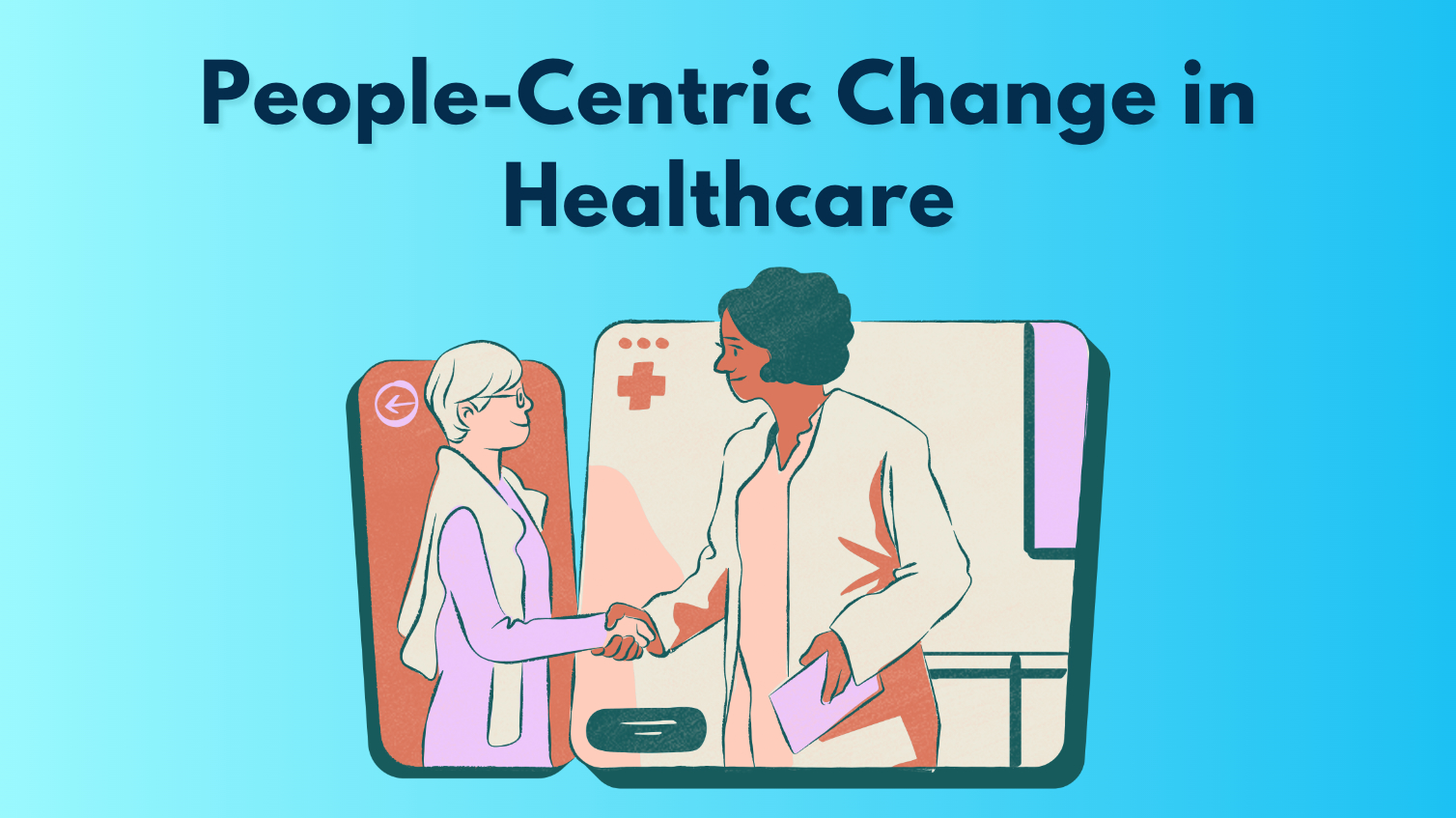
Managing Change in Healthcare
Examples of Organizational Change in Healthcare
Let’s look at an example of how important understanding the people side of change is.
Say that you have a change that’s going to impact the backend of how patient records are handled by changing the software tool that is used. This change will only minimally impact doctors and nurse practitioners who will gather notes in the same way. It will, however, greatly impact administration and nursing staff.
In this scenario of leading change in healthcare, you would expect less resistance from those less impacted and more resistance for those that will be significantly impacted by the change.
If you only focused your leadership and change champions recruitment efforts on the part of the staff less impacted, then when they try to explain how great changes in healthcare are, the most impacted folks will be less likely to respond positively because you haven’t included “their people” in your change champion group.
On the other hand, if you made sure that your change champions team was reflective of ALL the groups, especially those highly impacted, then when they respond to, “Why is change important in healthcare at our facility?” the administrative and nursing staff would be more likely to be positive.
What Is Change in Health Care? | The “People” Side
When evaluating change in healthcare, having an understanding of human behavior is a big plus. In this case, the Lewin and Bridges models we discussed can help because they go beyond the question, “Why is change management important in healthcare?” and zero in on user emotions and behavior.
Change management in healthcare organizations is only successful if you pay attention to user emotions and behaviors so you can address concerns and fears and help people get excited about the change and what it will mean for them.
Here are several tips for managing change in healthcare from the “people” side of the change.
- Take Time to Understand Group Dynamics: Some groups within your hospital or healthcare facility may function as “all for one and one for all,” while others may be more competitive in nature. Understanding group culture and dynamics is important to good change management in healthcare.
- Be Proactive About Potential Resistance: If you wait for resistance and negative feelings about the change to bubble up, it can take longer to mitigate it. Using a resistance management tool can help you be proactive and address resistance before it derails your change management healthcare efforts.
- Address the WIIFM (What’s in it for Me?): Managing change in healthcare is more successful if your stakeholders are onboard, and they’re much more likely to support the change if they know what’s in it for them (i.e., how does it benefit them?).
- Listen to Concerns: People like to feel heard, so listening to questions, fears, and resistance about your organizational change in healthcare can help you learn, adjust, and address concerns so you can move the project forward.
- Communicate Frequently & Be Transparent: Don’t leave stakeholders in the dark about your strategies for implementing change in healthcare in your facility. Transparent communication goes a long way toward understanding and acceptance.
- Don’t Rush Through Training: No matter what your timeline for your change management healthcare project, be sure to leave plenty of time for people to become familiar with the new processes and practice them, so they can feel completely secure once your go-live date arrives.
- Reward Milestones & Celebrate Success: Managing change in healthcare on a people level means giving them wins along the way and showing appreciation. Be sure to include milestones with small wins in your strategies for implementing change in healthcare at your organization.
- Sustain Change by Sticking Around: Wondering how to sustain change in healthcare? Your change management in healthcare activities aren’t finished after the change happens. It’s important to be there for users as a resource for a while after the change.
Why is Leading Change in Health Care Organizations Mandatory?
As many as 70% of change projects fail to achieve the desired results. Managing change in healthcare isn’t a “slam dunk,” it’s a complex transition, involving multiple stakeholders, as well as tools, processes, and behaviors.
Why do changes in healthcare need to be led thoughtfully and with a solid change management foundation? Because it gives you a much better chance of successfully transitioning your organization and people to the new way of doing things.
Using a change model in healthcare change planning and best change management practices give you the tools you need to understand all the facets of change. This makes implementing change in healthcare organizations much less daunting.
Stakes are high when it comes to implementing changes in healthcare organizations, which is why using change management techniques is a must.
Conclusion: Best Change Management in Healthcare | Models, Planning, People
While the foundations of change management are the same, no matter which industry is going through a change, changes in healthcare a particularly complex because of how many different people can be impacted.
Changes in healthcare procedures, technology, or processes can impact doctors, nurses, patients, administrators, laboratory personnel, billing professionals, and many others that work in or interact with a healthcare facility.
Other factors impacting change management healthcare facilities go through are the regulatory requirements in the industry with HIPAA, and the many different entities healthcare facilities work with (insurance companies, Medicare/Medicaid, etc.).
Change is nearly always happening in the healthcare industry for one reason or another, which makes change management in healthcare so important. If you have the roadmap and tools to guide people through change, you have a much better chance at meeting or exceeding your expected results.
There are multiple change models in healthcare to use as a guide. You can even use more than one for an even more detailed strategy for facilitating change in health and social care.
For example, you might choose to use the McKinsey 7S model as an outline of which areas of your organization need to remain in balance and use the ADKAR model for your step-by-step guide for managing change in healthcare.
We hope this guide for change management in healthcare was helpful in giving you an overview of why change management is so important when it comes to changes in healthcare, as well as illustrating how to successfully implement and sustain change.
Read More: Top Healthcare Consulting Firms | Ranking & Reviews
Note: Content on OCM Solution's ocmsolution.com website is protected by copyright. Should you have any questions or comments regarding this OCM Solution page, please reach out to Ogbe Airiodion (Change Management Lead) or the OCM Solution Team today. OCM Solution was previously known as Airiodion Global Services (AGS).
Images: https://stock.adobe.com, https://unsplash.com/photos/L8tWZT4CcVQ





